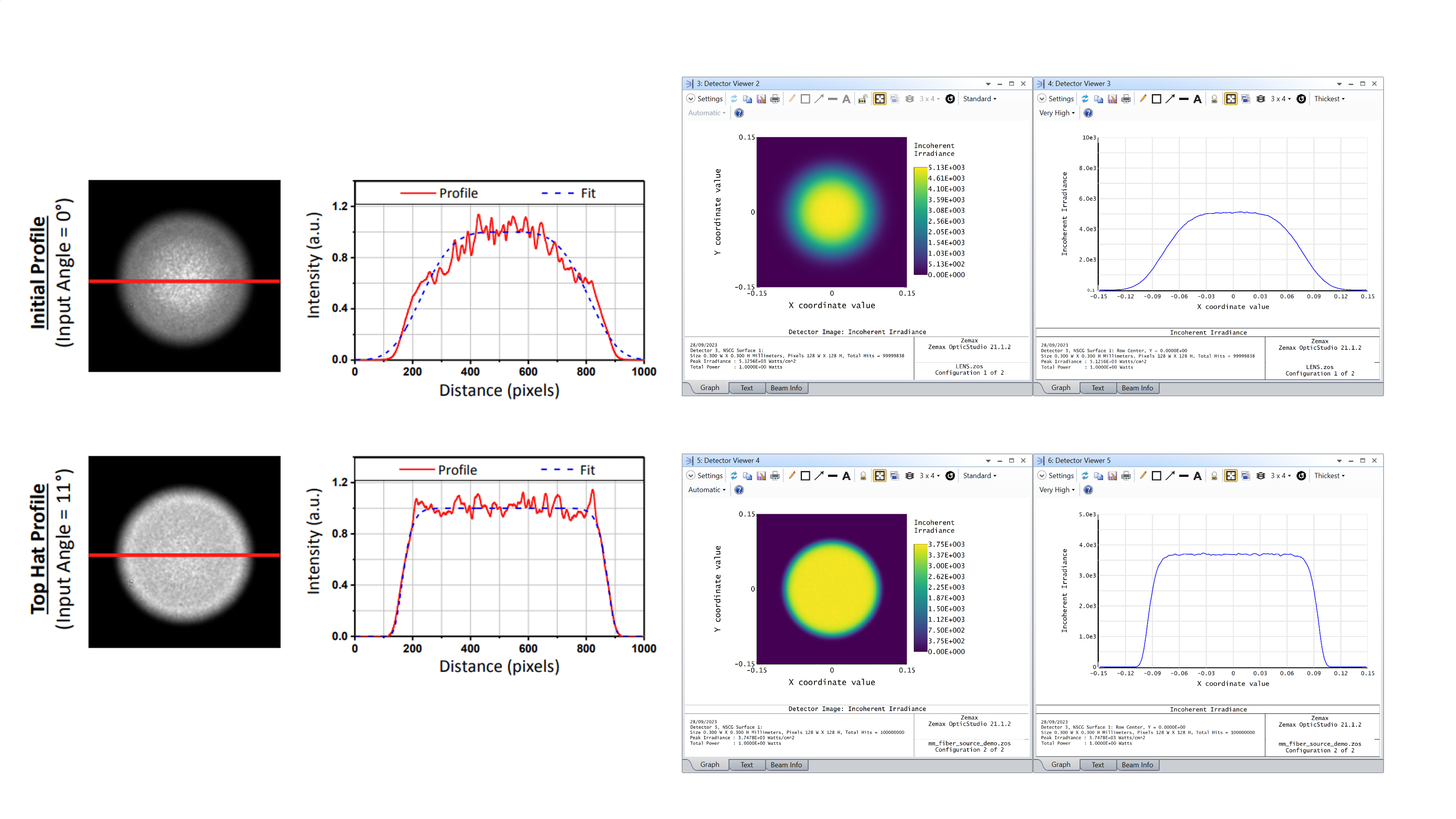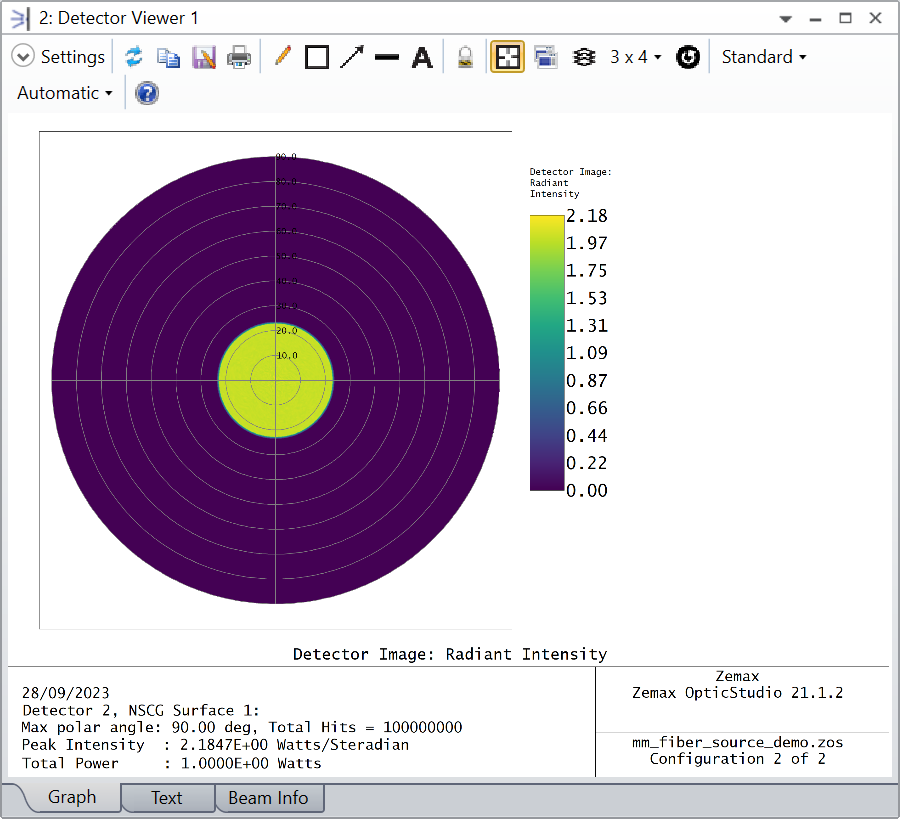Hello everyone,
When searching for affordable alternatives to produce a homogenous illumination, I came across a document from THORLABS called Multimode Fiber Beam Lab Fact. In Slide 7, they describe the spatial light distribution profile at the output of a multimode fiber as a function of the input source angle. Furthermore, they show that by having a small, 11 degree, input source angle, it is possible to flatten the spatial light distribution profile at the output. Here is a screenshot from Slide 7:
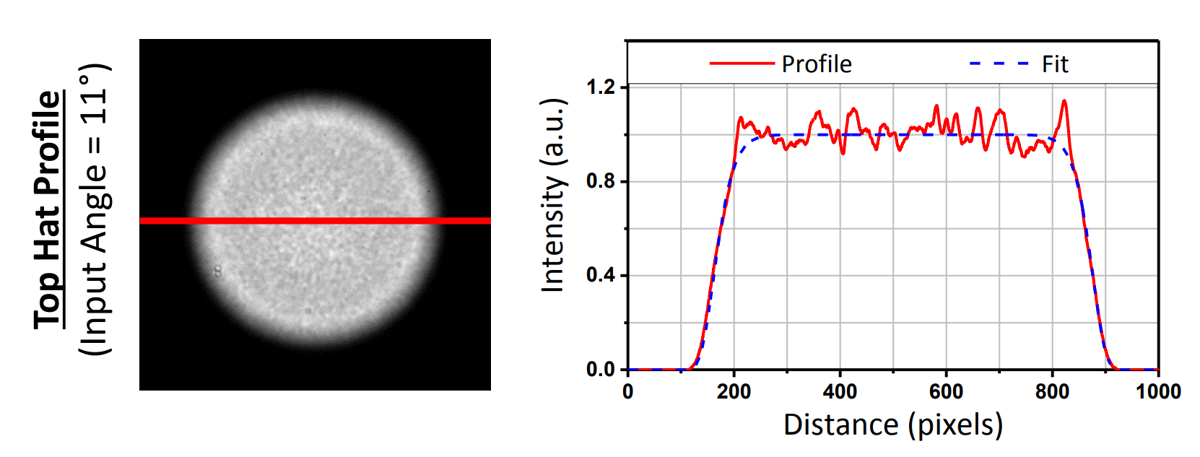
I thought it would be interesting to model this light profile in OpticStudio. I’ve started to document my approach in this notebook, but for those who are not interested in the details, I made a Source DLL that mimics the super Gaussian profile documented by THORLABS. This is the result for a 200-um diameter core and 0.39 NA with the 11 degree input source angle:
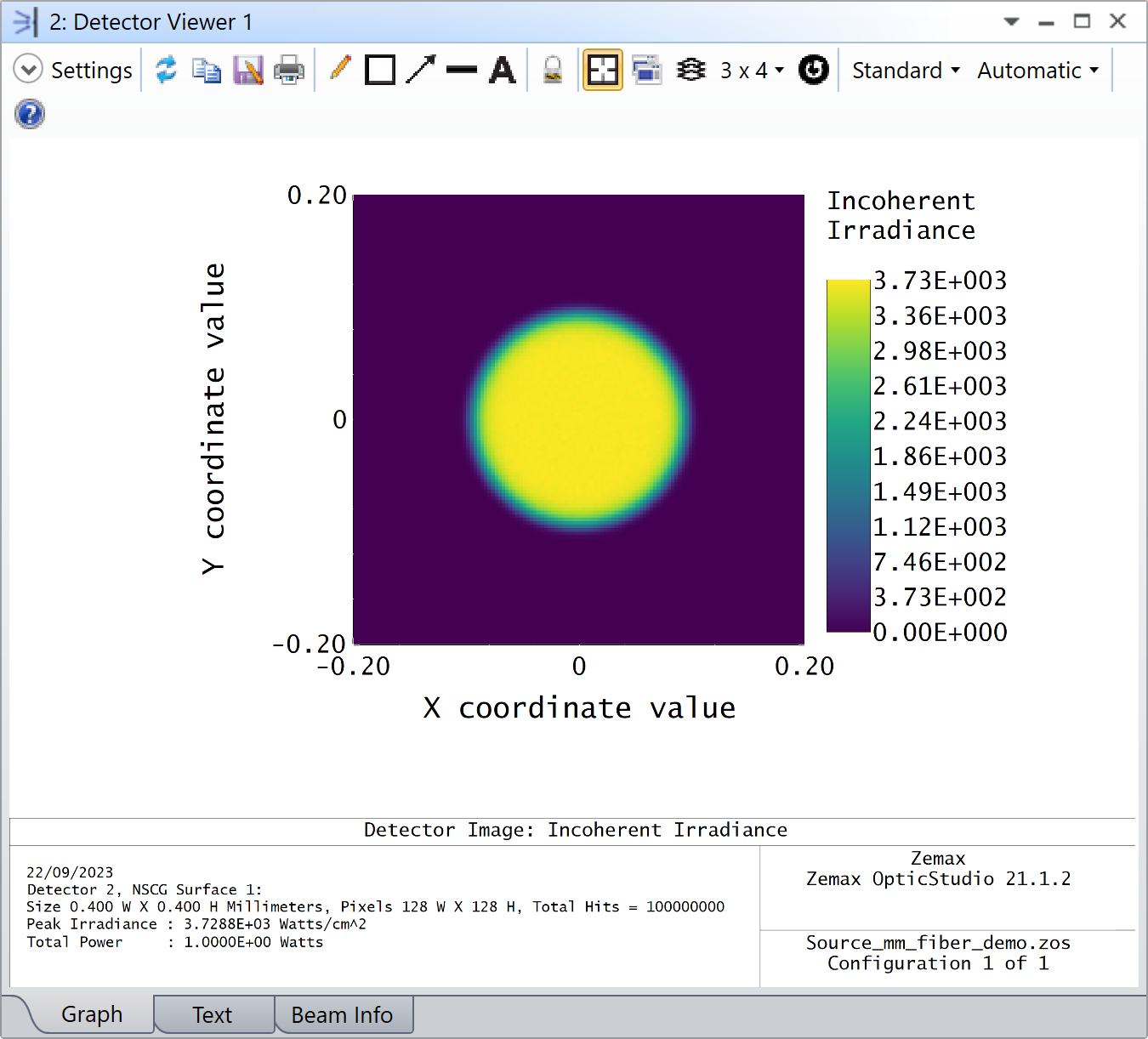
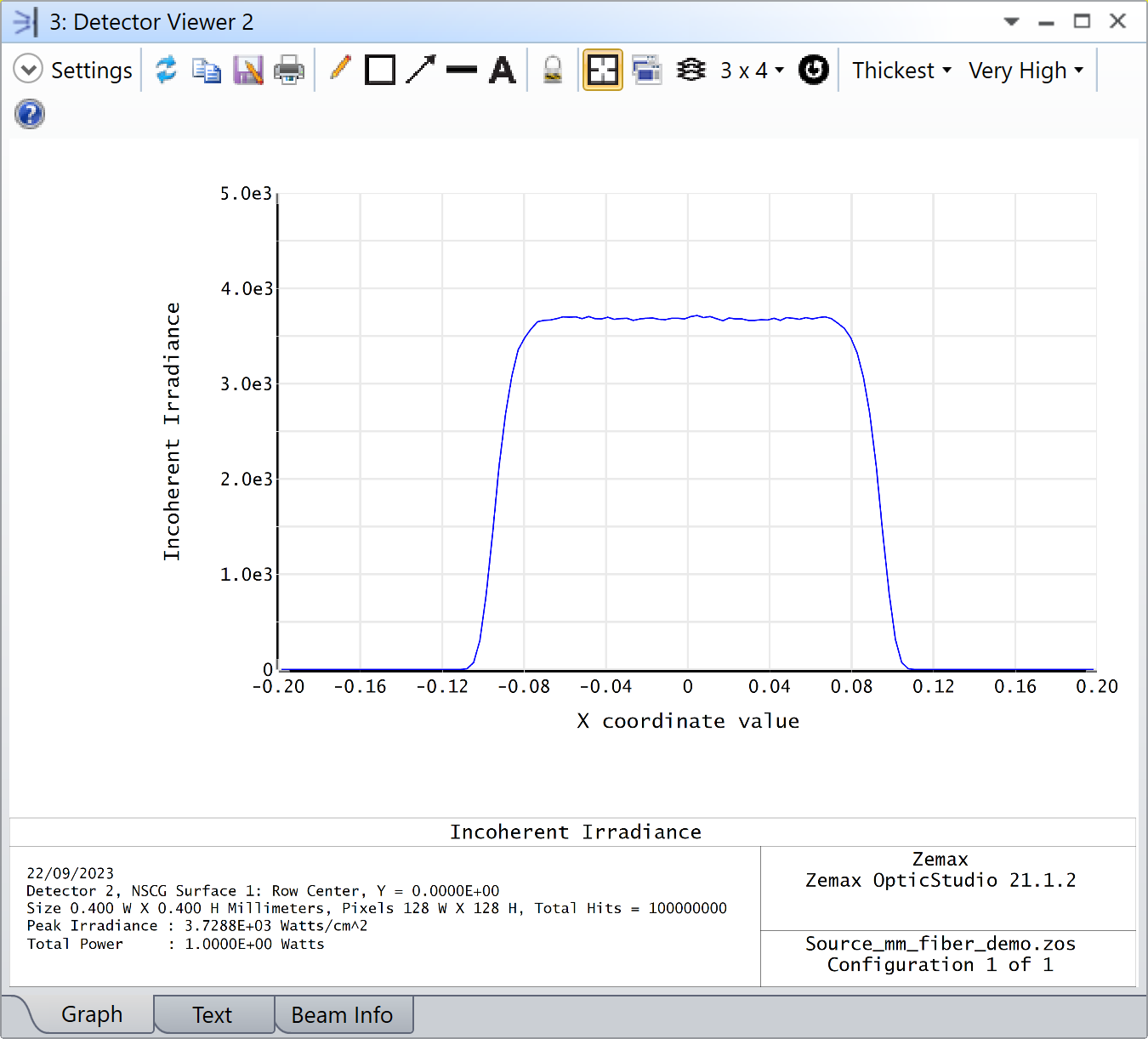
You can find my source code and the DLL in this repository, I’m also attaching an archive of a demonstration model, which will install the DLL right away.
The parameters of the Source DLL are as follows:
- Omega: this is the waist radius in lens unit (decimal value greater than zero), I’ve used the core radius cause I didn’t know the pixel size in THORLABS plot
- Alpha: this is half of beta as documented by THORLABS, greater values of alpha lead to a more rectangular profile, and if unitary should describe a Gaussian profile (should be greater or equal to one, I’ve only tested integers such as 1, 2, 4, 8, 16, 500)
- Rejection grid factor: this scales the grid in which coordinates are searched for rejection sampling (you can ignore this or just type 2, its the default value anyway)
- Fiber NA: this is the fiber NA (if below zero, default is 0.39)
This is still a work in progress, and I’d like to also include the donut profile in the future. Here is a question for the community though: I’ve assumed a uniform angular distribution over the half-cone angle calculated from the NA, is that realistic for a multimode fiber?
Let me know if you’ve find this helpful and how we could improve it.
Take care,
David



